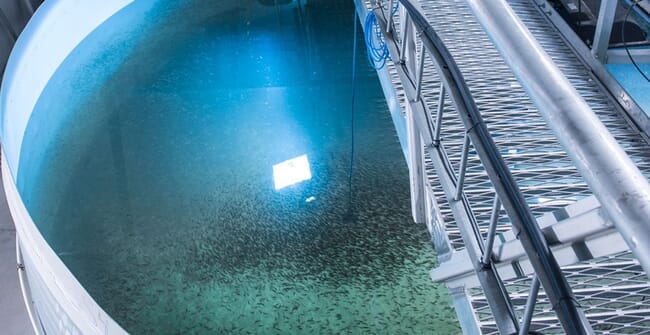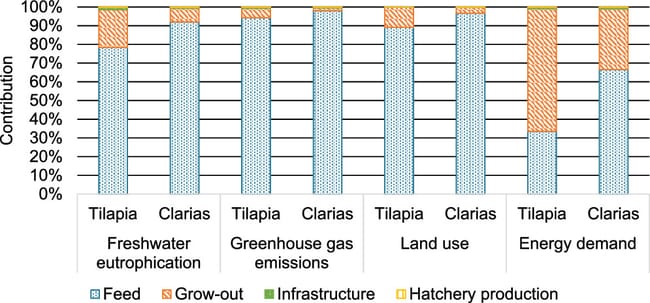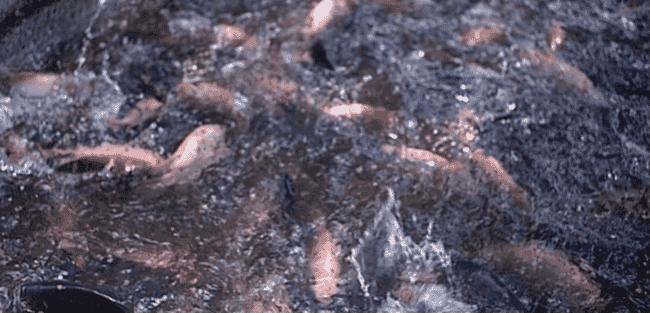Despite receiving positive attention from policy makers for their reduced water consumption and waste recycling, RAS usually come with steep energy costs. In many cases, the cost to maintain the necessary electricity and aeration for RAS puts them out of reach for many producers. However, this status quo could be shifting, according to the results of a life cycle assessment (LCA) of a tilapia and clarias catfish farm in Sweden, which has just been published in Environmental Science and Technology .

© AKVA
During the study the researchers noted that feed and feed production had the biggest impact on the farm’s environmental footprint. This contradicted the results from previous studies, in which farm-level energy consumption was calculated to have had the largest environmental impact. The authors of the new study note that the decreased energy burden could become more commonplace as RAS technology improves – arguing that RAS-farmed fish can contribute to a more sustainable food system.
The study and key results
The researchers conducted an LCA to measure the environmental impacts associated with RAS production, from producing the fry to slaughtering and filleting the fish. The assessment tracked the raw materials and inputs used to create 1 kg of finished fish fillets. The researchers also conducted a sensitivity analysis and modelled alternative production scenarios to establish a comparative baseline. This put the environmental performance of the RAS facility in context and highlighted the trade-offs between conventional production and RAS.
Their results showed that aquafeed carried the largest environmental burden during the production cycle. This was because the components of aquafeed, like poultry by-products, fish oil and soy, carry high environmental costs before they are converted to feed. The potential of eutrophication in culture water from feed is also high. The team noted that the environmental impact of aquafeed could vary, depending on the sustainability credentials of the feed. The potential for improvements in this area are high, especially considering the innovations seen in the fish nutrition sector.
The LCA also showed that the energy requirements for producing 1kg of finished fish were not as environmentally burdensome as other production factors. The total electricity use over the course of the year-long trial only varied by 15 percent. Energy use at the hatchery stage was also limited.


The researchers stressed that the improvement potential for RAS farming is immense – the impacts of each production input can be reduced as industries adopt new innovations and become more sustainable. If input industries – like aquafeed and power generation – adapt climate-friendly measures, the benefits of land-based RAS production will be more pronounced.
The devil’s in the details
Although the energy use results are promising, they come with multiple caveats. First, many LCAs don’t always account for the ways input variables interact with one another. This lack of nuance can make it difficult to draw concrete conclusions or generalise about the findings of individual LCAs.
An additional caveat stems from geography. Sweden already produces most of its electricity with renewable or low-emissions methods – like hydropower and nuclear energy. This means that the potential environmental burden from energy over the production cycle would be comparatively low. Other factors, like high-quality building insulation at the production site, likely reduced heating costs. If this LCA were conducted at a RAS facility in a country where electricity was sourced from coal-fired power plants, or where building insulation was poor, the environmental burden of energy would be higher.
Despite these caveats, the researchers conclude that scaling up RAS production could make Sweden’s food system more sustainable. Countries with similar infrastructure and policy investments could see comparable results.




